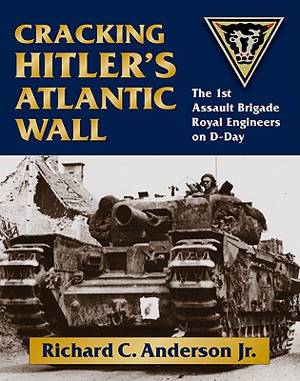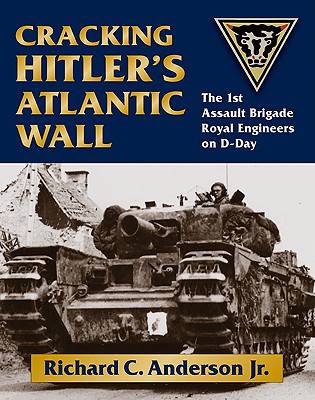
- Afhalen na 1 uur in een winkel met voorraad
- Gratis thuislevering in België vanaf € 30
- Ruim aanbod met 7 miljoen producten
- Afhalen na 1 uur in een winkel met voorraad
- Gratis thuislevering in België vanaf € 30
- Ruim aanbod met 7 miljoen producten
Zoeken
Cracking Hitler's Atlantic Wall
The 1st Assault Brigade Royal Engineers on D-Day
Richard C Anderson
Hardcover | Engels
€ 34,95
+ 69 punten
Omschrijving
Landing with the British and Canadians in Normandy on D-Day, June 6, 1944, was the 1st Assault Brigade Royal Engineers, a specialized armored unit tasked with removing obstacles and mines from Gold, Juno, and Sword Beaches. To support this mission, the engineers modified their tanks with ingenious innovations, such as replacing the main gun with a giant mortar or attaching a steamroller-like device to flatten a path in the sand. In the early hours of D-Day, the brigade landed under fire, and took serious casualties in some areas, but achieved many of its key objectives and cleared the way for the infantry.
Refreshingly different perspective on the momentous events of D-Day Nuts-and-bolts narrative of how the landings were carried out along with details on the unique British armored vehicles used in the invasion The controversy over the U.S. refusal to use these vehicles, which may have contributed to bloody American losses on Omaha Beach
Specificaties
Betrokkenen
- Auteur(s):
- Uitgeverij:
Inhoud
- Aantal bladzijden:
- 288
- Taal:
- Engels
Eigenschappen
- Productcode (EAN):
- 9780811705899
- Verschijningsdatum:
- 1/01/2010
- Uitvoering:
- Hardcover
- Formaat:
- Genaaid
- Afmetingen:
- 208 mm x 259 mm
- Gewicht:
- 911 g

Alleen bij Standaard Boekhandel
+ 69 punten op je klantenkaart van Standaard Boekhandel
Beoordelingen
We publiceren alleen reviews die voldoen aan de voorwaarden voor reviews. Bekijk onze voorwaarden voor reviews.








